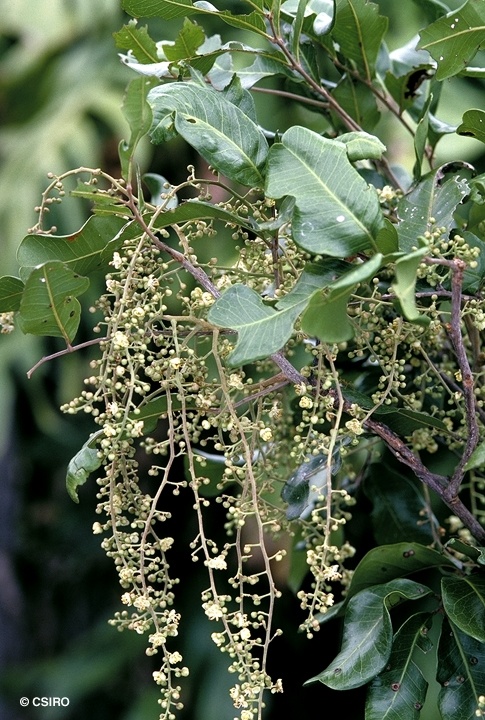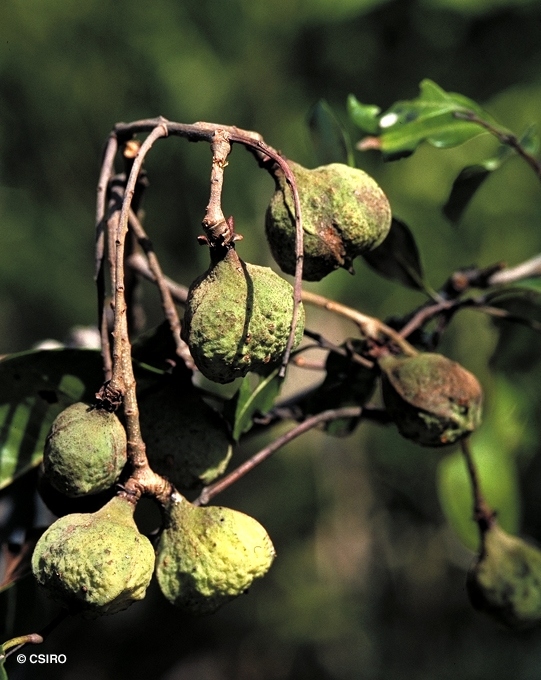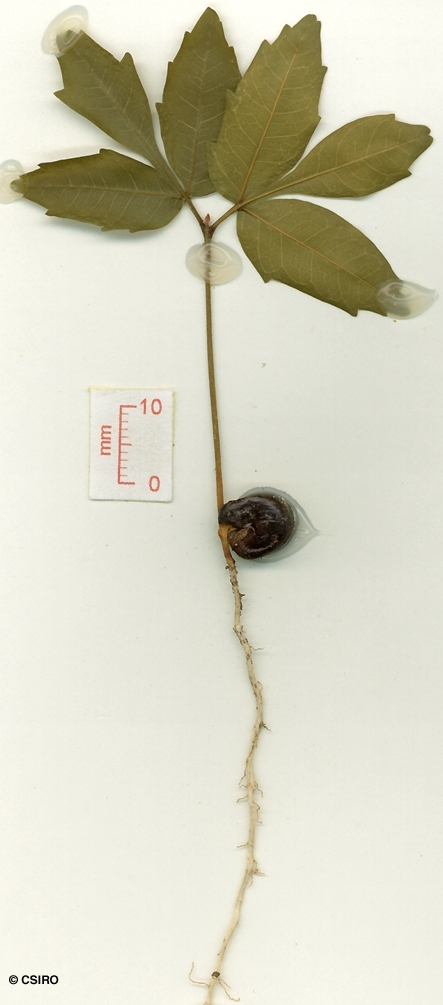Australian Tropical Rainforest Plants - Online edition
Cupaniopsis anacardioides (A.Rich.) Radlk.








Radlkofer, L.A.T. (1879) Sitzungsberichte der Mathematisch-Physikalischen Classe der k. b. Akademie der Wissenschaften zu Munchen 4: 512.
Tamarind, Green Leaved; Beach Tamarind; Tuckeroo; Green Leaved Tamarind; Carrotwood; Tamarind, Beach
Usually a small tree not exceeding 30 cm dbh but recorded to 40 cm dbh. Lenticels often tend to be arranged in vertical lines. White or cream, granular, longitudinal stripes usually visible in the outer blaze.
Small oil dots visible with a lens. Leaflet stalk swollen at its junction with the compound leaf rhachis. A ridge normally present on the upper surface of the rhachis. Leaflet blades abut 4.5-19 x 1.5-7.5 cm. Lateral veins about 10-14 on each side of the midrib and forming loops just inside the leaf blade margin.
Flowers pedicellate. Calyx lobes about 2.5-4 mm. Petals smaller than the calyx. Stamens eight.
Capsules about 15-30 x 15-28 mm, hairy on the inner surface (densely clothed in white hairs). Capsules appearing almost glabrous externally, the hairs short and visible only with a lens, puberulous. Aril orange-red, nearly or completely enclosing the seed. Seeds dark brown, about 15 x 8-9 mm.
First pair of leaves compound, trifoliolate or pinnate, with toothed lateral leaflets and lobed middle or terminal leaflets, sometimes with two leaflets only. Petiole and rhachis of compound leaf winged. At the tenth leaf stage: leaflet blade margin smooth; midrib raised on the upper surface of the leaflet blade, lateral veins forming definite loops inside the blade margin with a tendency towards a double series of loops. Seed germination time 13 to 25 days.
This fruit is the favorite food of many fruit eating birds. Cooper & Cooper (1994).
Food plant for the larval stages of the Pale Ciliate Blue, Dark Ciliate Blue, Marginata Blue, Hairy Blue, Fiery Jewel, Common Oakblue, Fielder's Lineblue and Glistening Blue Butterflies. Common & Waterhouse (1981).
Widely cultivated in parks and gardens and as a spreading and shady street tree. It is also noted for its adaptability and tolerance of strong and salt laden winds.
This species has become a troublesome weed in Florida.





